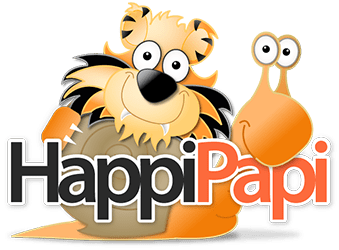
What About a BOGO Campaign He Said…
As you all know, standing out from the crowded app scene is extremely hard and absolutely necessary for an app developer. Over the last few months we at Happi Papi have found ourselves letting what might get better media attention rule our decisions to a higher extent. Whether it be the type of apps to develop, the message in a press release or, the topic of this post, a media campaign.
How To Get Noticed
The reason for paying better attention to the marketability of the message is obviously to get noticed better in the media. There is nothing that drives app sales better than a mention in mainstream media like a national morning paper, TV or a relevant magazine. We have experienced this first hand a couple of times lately:
The first was when we took the help from other devs to launch our App Evaluation Program for Schools. By being several developers behind the program at launch the message could be “Developers Join Together to Offer Free Apps for Education” rather than the meeker “Happi Papi Starts Evaluation Program for Schools” that we would have had to go with otherwise. Our press release was picked up left and right, we did phone interviews, print interviews etc. We even got written about in Wired.
The second time we noticed that a hot media topic is more marketable was when we launched our latest app Happi Full Throttle. For those who don’t know, this app is a fun driving simulator for kids where the iDevice’s camera act as the windshield of different vehicles. When put that way, this app was about as interested as another coloring book to the media. But when called “The First Augmented Reality Driving App for Kids”, we again had our message picked up by a lot of media outlets. Drawing from the above, we are postulating that it is the type of message rather than the actual product that decide if you get noticed or not.
Marketability Rules
Cynically or not, we have therefore decided to let marketability be the stronger factor in our development decisions. This is a step away from what we have done in the past where we based our decisions more on what skills we had and what type of app or messages would work. We’ll know soon enough if this is the right approach.
Our latest decision based on our theory is our new Buy One Get One FREE campaign. We had been asked by a lot of places if we wanted to join in on one of their Back to School campaigns. While these area all good campaigns and great people to work with, we weren’t sure that the campaigns would stand out in the crowd.
BOGO
Instead we asked ourselves what message do we have to send to have a chance of it being picked up by the media? After some brainstorming someone said “What about a BOGO campaign?” After some Googling we found out that this had not been done before (at least not on a greater scale). Being unique is always a good criteria when trying to get your message out there.
Other good aspects of a BOGO campaign are, the already existing Twitter bogo-hashtag (#bogo), the fact that people are “trained” to react to the BOGO acronym and associate it with something positive and most importantly, the marketability of getting something for free.
Again?
If this campaign goes well we are already thinking of doing it again, maybe for Christmas. But in order to be unique again at that time we will probably ask some of our developer friends to join in.
Wouldn’t it be great for customers if they could pick and choose apps to buy and get for free from among 100 different apps!?








